You guys are smitten with Highland Park whisky right now.
I know this because I was shown the research that reveals search volume this year has increased by 110% on Master of Malt.
Highland Park has been in the news a lot in 2025, fresh from a revamp that ditched the Viking helmet for a smart-casual Orkney weave, to the retirement of long-term whisky maker Gordon Motion, and the release of its oldest ever whisky.
Then there’s the continuing appeal of bottlings like Highland Park 12, which means it’s never far from the spotlight. This is a story of how packaging and provenance can shape perception, but flavour ultimately wins out..

Highland Park whisky with its cleaner look
How the Norse narrative stuck
Highland Park distillery has been producing whisky since 1798, when Magnus Eunson first set up his illicit still in a location that lies closer to Oslo than London.
Orkney is very much a Scandi-Scottish island. It is littered with reminders of Viking occupation, from the Orphir Round Kirk to the St. Magnus Cathedral. It’s got place names like Kirkwall and Rousay, and architecture that’s more Norse than neoclassical.
A survey even found that one in three Ocardians has ‘Viking DNA’. I’m presuming that’s people who can trace lineage to present-day Denmark, Norway, and Sweden. Although I now can’t stop picturing DNA strands wielding axes on a great longboat.
The Vikings came to Orkney in longboats, ruling the northern isles through a succession of earls from around 800 to 1468, when Scotland annexed it. And Highland Park was enamoured enough by that legacy to rebrand its whole image in 2017 with Viking iconography.
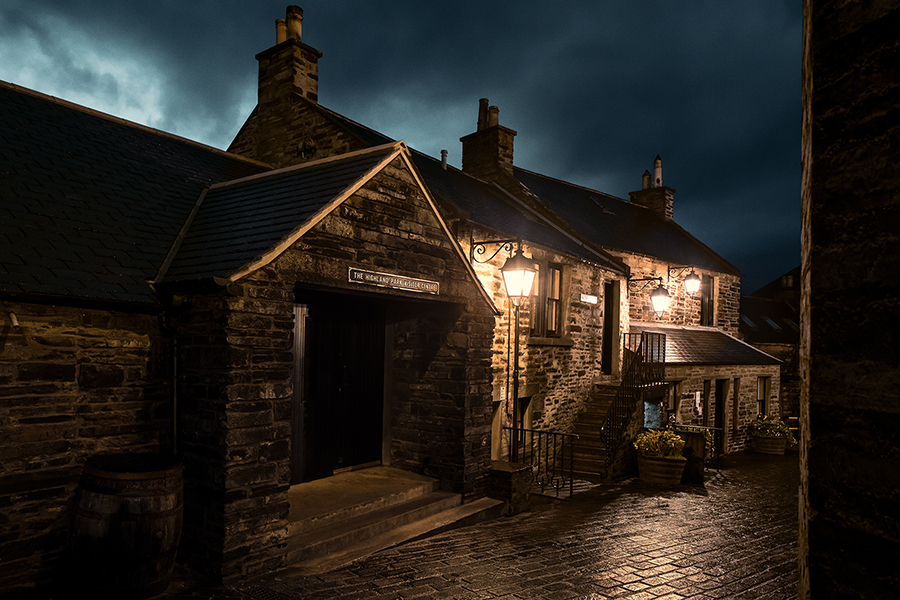
The Highland Park Distillery
Trading Viking pride for Orkney provenance
Highland Park 12 Year Old became Viking Honour, the 15 evolved into Viking Heart, and the 18 into Viking Pride. Various new ranges of limited-edition whiskies followed, all inspired by the lore. The bottle design mirrored a Viking sleeve tattoo, all engraved carvings modelled after the wooden ones found at Urnes Stave Church in Norway.
It was a mighty makeover. And I kinda get it. While the Vikings certainly have a darker side to their complex history, the simple matter is that, much like pirates, the Romans, or the T-Rex, they’re cool. Norse ain’t niche, certainly not in a world where the fantasy genre continues to take a lead from Tolkien’s love of the mythology, Marvel characters based on Thor and Loki rule the box office, and historical dramas like Vikings, The Lost Kingdom, and How To Train Your Dragon (that was all real, right?) bring in big audiences.
But therein lies the rub. Vikings are a saturated market. Sections of whisky lovers felt it was too gimmicky. Scepticism follows marketing like night after day in whisky. It’s easy to be a cynic. The whisky was still made at the same distillery. Some people really dug the Viking aesthetic. Ultimately, you can’t please everybody.
The re-launch
At the end of last year, Highland Park entered a new chapter. It ditched the Marvel cosplay for a simpler design, aiming for elegance over iconography backed by the ‘Different by Nature’ campaign, which aimed to show off the people and place behind the spirit.
The redesigned packaging sports heather-flecked labels and a sleeker square bottle with ‘Product of Orkney’ debossed into the glass.
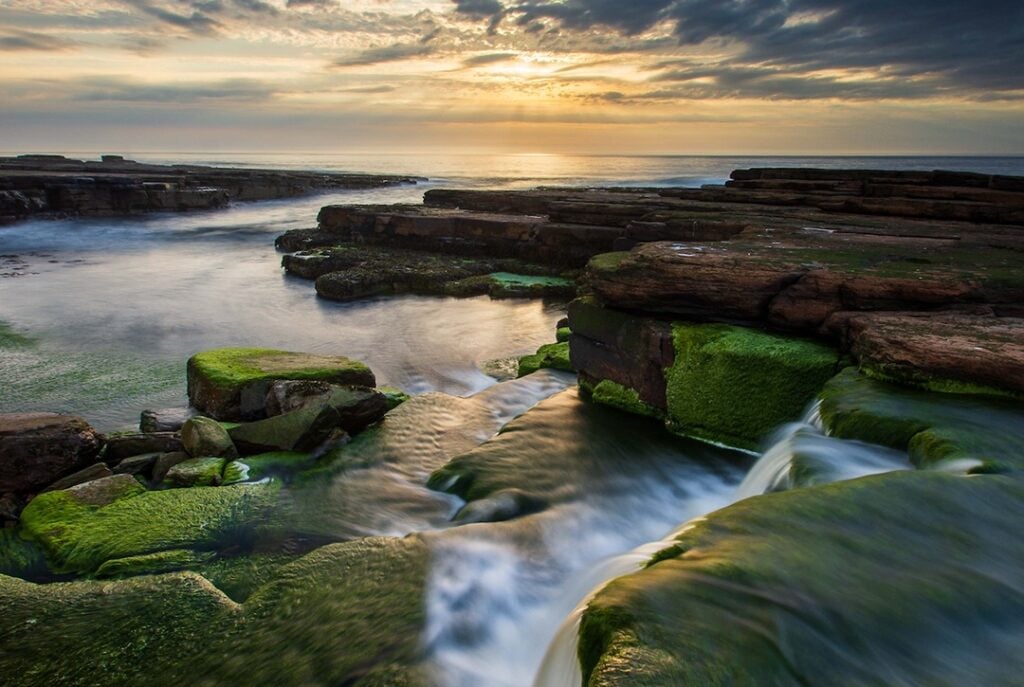
The beautiful Orkney, off the northeast coast of Scotland
What’s in the bottle still matters
What’s on the bottle can only row your boat so far when it comes to whisky, however. Viking longboat or otherwise. Highland Park remains a favourite because of the whisky it creates.
The distillery defines its whisky-making process by five ‘keystones’. These are the use of floor maltings, Orkney peat, and quality sherry casks, as well as its unique maturation climate, and a process of ‘cask harmonisation’. Utilising the skill of a good master maker, basically.
The ‘keystone’ thing does sound like something a marketing executive came up with. But dig deeper into each step, and you’ll see the same important pillars of production that define most whiskies, as well as the nuances that separate Highland Park from the rest.
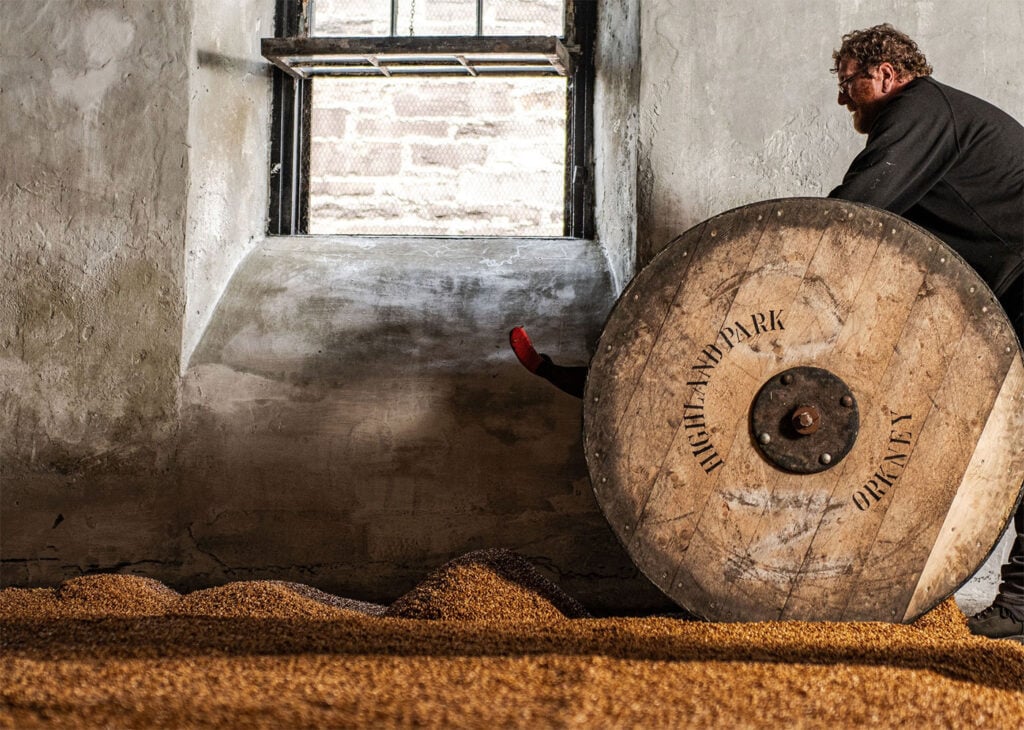
Highland Park still has a functioning floor maltings
The magic in the malt
Let’s start as whisky making does, with malted barley.
Maintaining traditional floor maltings is not done for aesthetics alone. It’s a costly, labour-intensive process that was phased out elsewhere for a reason. But romantic whisky nerds love them. Being one of a handful of Scotch whisky makers to still turn its malt by hand gets you brownie points in most whisky circles. The local climate, its humidity, is noted to affect the barley.
At Highland Park, the malt is turned every eight hours, seven days a week, to maintain the right balance of moisture and airflow that will allow the barley to absorb the ‘reek’, the aromatic smoke made by the peat that burns in the distillery’s two pagoda-topped kilns (the youngest of which is over a century old).
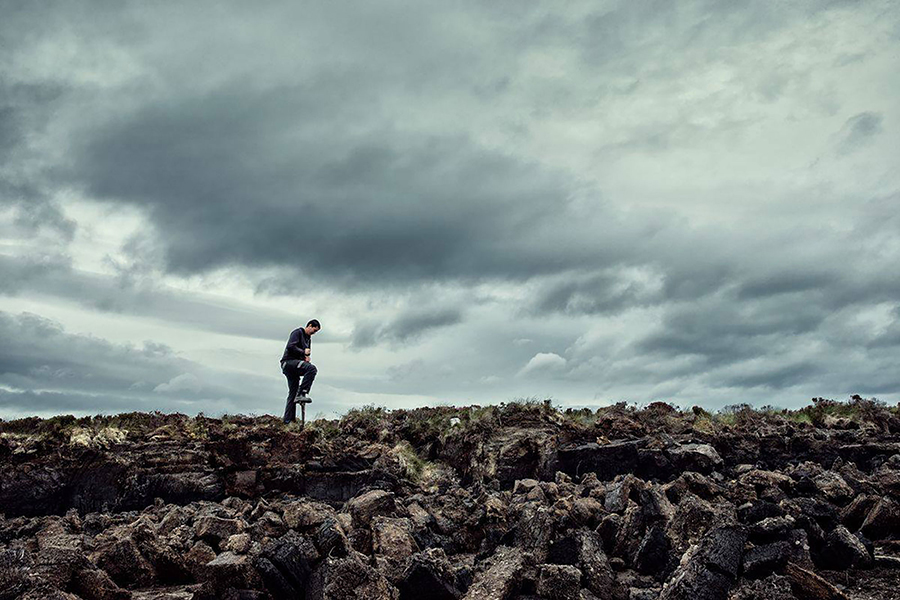
The peat on Orkney has a unique composition, which affects the profile of the whisky
Why is Highland Park peat unique?
One of just two distilleries to call the Orkney Islands home, Highland Park has a compelling sense of place. Its peat is at the core of it.
Orkney peat has a softer, more fragrant profile than you’ll find on Islay. With few trees (underlining the importance of peat as a fuel for kilning), the peat that has formed over the last few thousand years tends to come from decomposed moss and heather.
Highland Park gets its supply straight from Hobbister Moor, just seven miles from the distillery, and has done so for over two centuries. Trials many years ago of peat from the mainland changed the flavour of the whisky too much.

Highland Park Distillery’s stills
Maturation on Orkney
The third keystone is Highland Park’s cask supply. There are very few bourbon casks in the 23 warehouses (numbered 1-25 without 3 or 17, a quirky island mystery) at the distillery; it’s pretty much all sherry. The distillery has a partnership with managed forests to source European and American oak trees, and Edrington, owners of Highland Park as well as The Macallan and others, has its own cooperage.
The wood is cut to form staves at precisely 45°, which is common in woodworking and construction as it means you create 90-degree joints which fit square and rectangular shapes neatly. For casks, this means a tighter fit, which makes it hard for the spirit to escape, and it’s how the Vikings made their longships watertight.
We’re veering into the marketing world again, but bear with me. The next stage is shipping the staves to Jerez in southern Spain, where they’re made into casks and filled with sherry. After being left to mature for two years, they’re shipped back and filled with Highland Park’s peaty new make. That’s an exhaustive, expensive way of doing things. But it also gives the distillery great control over the quality of its wood.
This wood then matures in the unique microclimate of Orkney. The North Sea meets the Atlantic Ocean here, where sea winds can reach 100mph, and winter is long and dark. The Gulf Stream provides relief, however, meaning things never get arctic, seldom going below 2°c. It’s a great whisky maturation climate, very slowly paced and even.
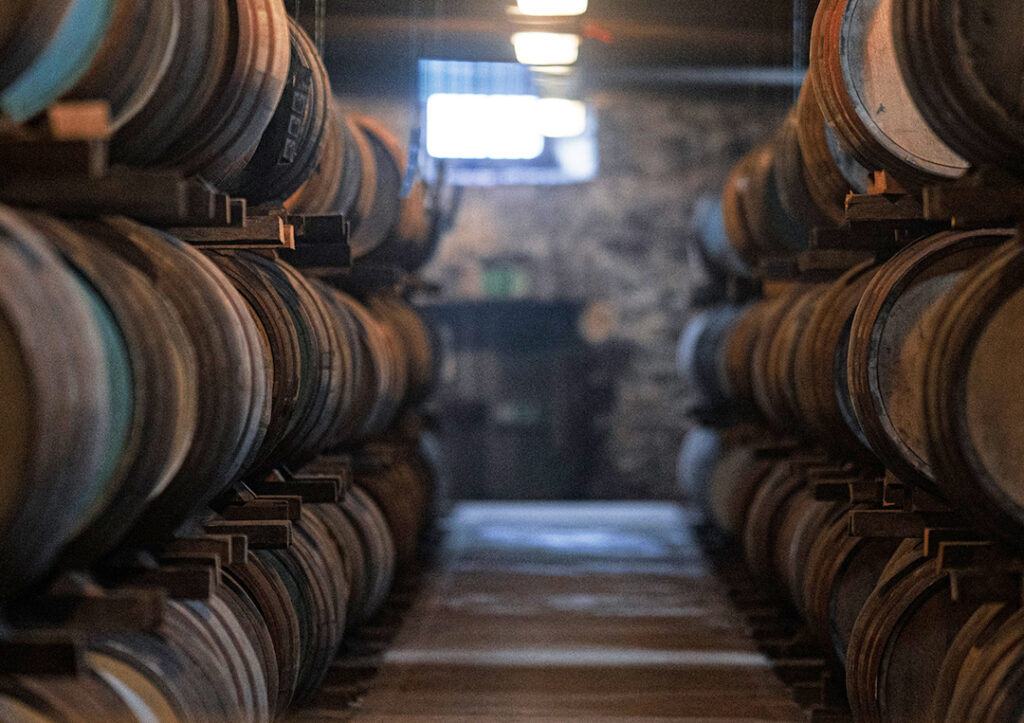
z Highland Park whisky in waiting
The master whisky maker moves on
Keystone Five also takes place in the warehouse, where the master whisky maker creates each batch of Highland Park by selecting and marrying up to 150 casks. The blend is always left to rest for at least a month before bottling.
Arguably the least individual keystone, to be honest, as other distilleries will have a similar process, but not often with that range of casks to blend from or that formal and regulated an approach.
Motion is also an experienced and respected whisky maker, so you can see why the distillery wants to highlight his impact. However, the man who helped define Highland Park’s modern flavour profile is stepping down in 2025 after 27 years of whisky making. Starting with Edrington as assistant to the whisky quality manager, after 10 years to he took over as master blender in 2008. Since 2018, Highland Park has been exclusively his baby.
Now, the baton has been passed to Marc Watson, who brings more than 11 years of experience to the table. His previous role was master blender for The Famous Grouse and Naked Malt since 2023.

There’s many ways to enjoy Highland Park whisky
Highland Park whisky: tasting notes & food pairings
The core range is Highland Park 12 Year Old, 15 Year Old, and 18 Year Old. You can also still get bottles of Highland Park 12 Year Old Viking Honour, 15 Year Old Viking Heart, and 18 Year Old Viking Pride, but while the liquid is the same, no more of the bottles will be made. Do with that information what you will.
Each showcases the distillery’s signature style: balanced peat, sherried richness, and a touch of Orkney wildness. Highland Park 12 remains the gateway dram for many, balancing floral peat, honeyed sweetness, dried orange peel and a backbone of sherried spice. Step up to Highland Park 15 and 18, and you get increasing richness, complexity, and influence from those sherry casks. The 18 Year Old in particular garners critical acclaim for its seamless integration of smoke, fruitcake, leather, and lingering spice.
Read Highland Park reviews and you’ll tend to find the same thing. People celebrating the nuance across the core range: not overly smoky, not overly sweet, but sitting squarely in the Goldilocks zone of balance.
As for pairings, any good whisky can be a culinary asset with a little creativity.
Food pairing ideas
Highland Park 12 Year Old – try smoked cheddar, grilled lamb chops, mushroom pâté on sourdough… let all those earthy, savoury, umami, and smoky elements sing together.
Highland Park 15 Year Old – try roast duck, dark chocolate with sea salt or charred aubergine with a miso glaze. A rewarding sweet-savoury collision.
Highland Park 18 Year Old – try blue cheese, treacle tart, or a sticky date pudding. Decadent, funky, and worthy of the dram.

The refreshed range
Limited editions & collectibility
The core range isn’t just home to consistent favourites. It’s a reliable launchpad for new drinkers who want to explore the distillery’s offerings.
Take the Cask Strength series, now up to Release No. 6, which strips away chill-filtration and colouring to deliver Highland Park in its most unvarnished form. There are travel retail favourites too, plus a Single Cask Series, where individual barrels are hand-picked for exclusive markets, often yielding under 600 bottles. Plus independent bottlings.
Collectors take note: Highland Park’s limited editions are a big part of its 2025 buzz. The recent release of the Highland Park 56 Year Old, its oldest whisky ever, sent hoarders into Gollum-esque overdrive. Just 225 bottles were made, each one housed in a hand-carved Scottish oak presentation box.
It’s a rare glimpse into Highland Park’s long-term cask programme, and underscores Highland Park’s ambition to keep things interesting without losing the plot. There’s innovation, yes, but also continuity.

The oldest ever Highland Park whisky was released this year
Why it’s trending
Behind the scenes, Highland Park is undergoing a significant sustainability upgrade. The distillery is installing a heat recovery system that will drastically cut carbon emissions, alongside new stainless steel washbacks designed to save water.
The refreshed sense of purpose is palpable. Old favourites still convert newcomers, critics and fans defer to its balanced profile, and Orkney’s oldest distillery has enough compelling narrative without evoking Odin.
Major sustainability upgrades and new leadership tease the brightness of a future Highland Park can write knowing it wields the most important thing of all: whisky people actually want to drink.
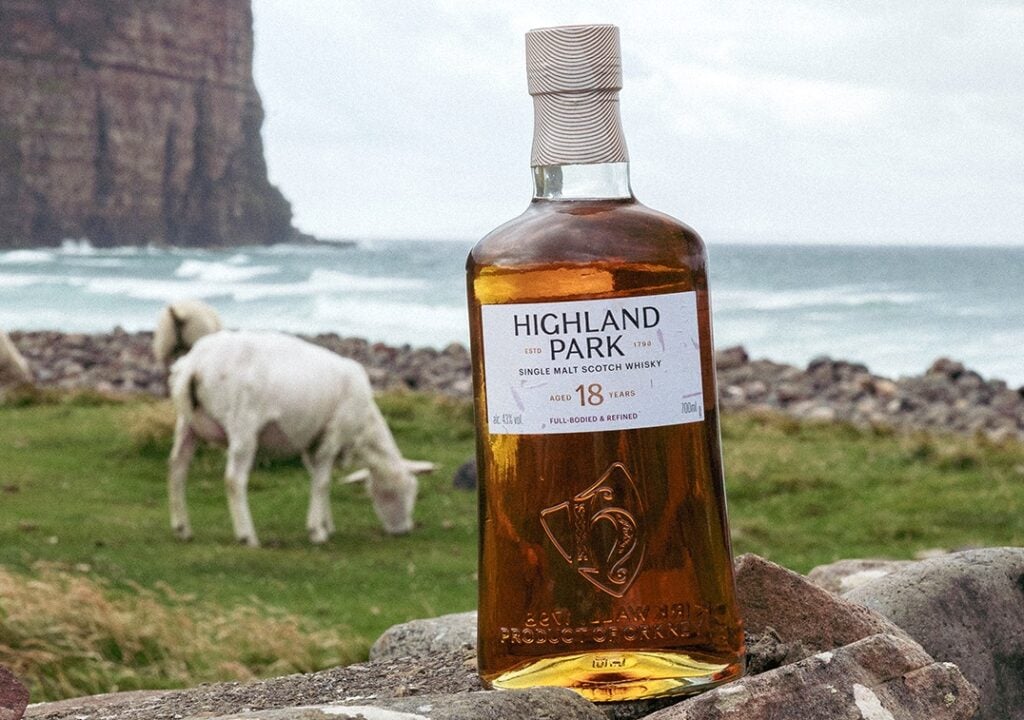
You can buy Highland Park whisky from Master of Malt.
Try the range:
Highland Park 12 Year Old – The classic introduction to Orkney’s mellow smoke and honeyed sweetness. The whisky that made me understand what can be.
Highland Park 15 Year Old – Step up to richer fruit, deeper sherry influence, and a more pronounced smoky backbone.
Highland Park 18 Year Old – Elegance in a glass. Layered, luxurious, and long on the finish.
